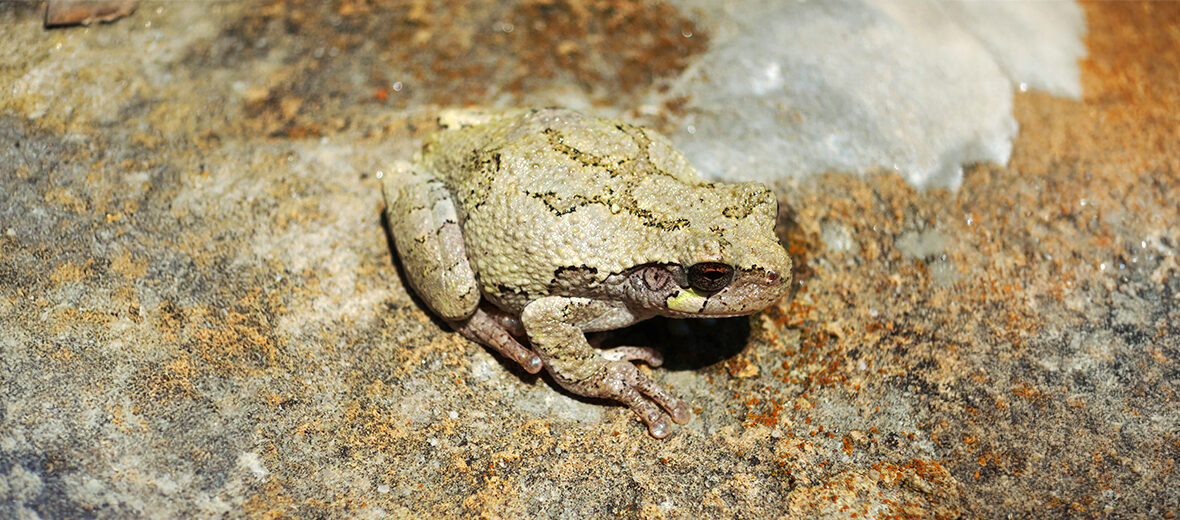
The gray treefrog, aka common gray treefrog, eastern gray treefrog, northern gray treefrog, or tetraploid gray treefrog, is a diminutive, arboreal holarctic (biogeographic realm encompassing the northern parts of the Old and New Worlds) treefrog that hails from midwestern and southeastern Canada as well as midwestern and north eastern United States. These frogs suffer the threats of hunting, trapping, overcollecting, and invasive species (and with them predation and disease). However, these tiny amphibians are abundant enough to be listed as Least Concern by the IUCN. Their population trend is also curently listed as stable. This article is dedicated to my good friend Jasmine.
First the Stats…
Scientific name: Dryophytes versicolor
Weight: Up to .25 ounce
Length: Up to 2 inches
Lifespan: Up to 7+ years
Now on to the Facts!
1.) They can change their coloration from gray, to green, to brown, to nearly black, and also white; depending on their environmental situations.
2.) These frogs are practically indistinguishable from the Cope’s gray treefrog, sans by their call.
3.) Hybridization between these 2 species typically results in early mortality and reduced fertility.
4.) Insects, insect larvae, harvestmen, mites, plant lice, spiders, and snails are all on the menu. Smaller frogs are also sometimes cannibalized.
5.) Due to their waxy skin, these frogs are less prone to overheating and/or desiccation (drying out) than other amphibians.
But wait, there’s more on the gray treefrog!
6.) The mating calls from males can often be drowned out by other male’s calls.
7.) When their calls are drowned out, some males will switch to a call known as an aggressive call in order to stand out amongst the crowd.
Did you know…?
The gray treefrog is able to survive the freezing of its internal body fluids to temperatures as low as 18°F.
8.) As a female gets closer to the male calling, he will often times change his vocalizations to help her find him.
9.) Gray treefrogs are nocturnal (active at night).
10.) Snakes, birds, skunks, opossums, raccoons, and other larger frogs all prey on these frogs.
Now a Short Gray Treefrog Video!
Be sure to share & comment below! Also, check out the Critter Science YouTube channel. Videos added regularly!
Want to suggest a critter for me to write about? Let me know here.
Some source material acquired from: Wikipedia & IUCN
Photo credit: Peter Paplanus




